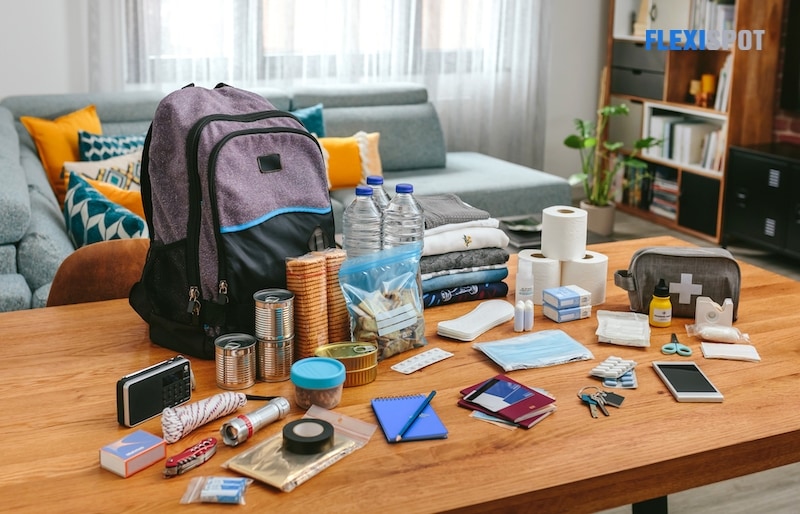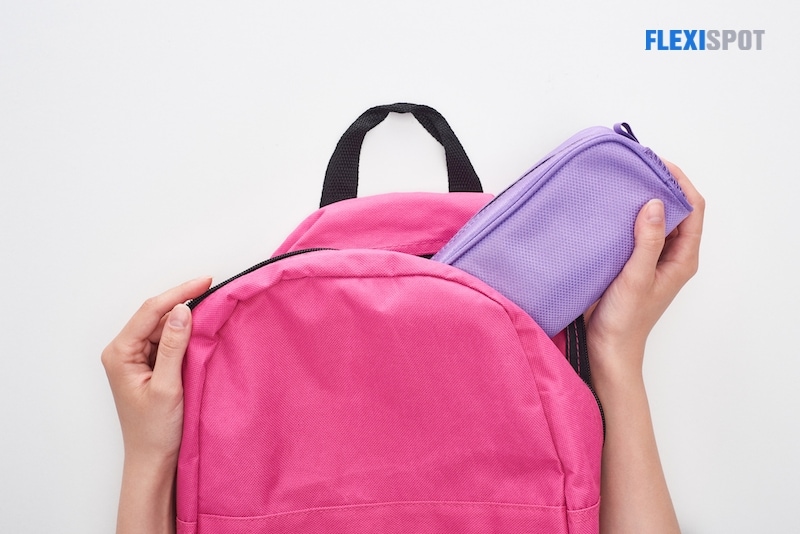Children have stuff to take between home and school from pre-kindergarten to college. Throughout their schooling, many children depend on backpacks to store and move their stuff. Too often, bags grow overloaded, making it harder to find anything. A well-organized backpack can make a significant impact during the academic year. It will not only reduce the amount of baggage kids carry around with them, but it may also improve their grades. And besides, mental energy saved from sifting through a stack of papers is the energy saved for learning.
The start of the school year is the most significant opportunity to create better habits with your students. And, between enjoying a smooth morning and jumping back into the groove of school lunches, knowing how to pack your child's backpack maybe the bottom of your priority list. But don't ignore this critical stage in preparing your child for success in September. By establishing an easy method for placing everything in its appropriate spot early on, you greatly limit the chances of water bottles leaking all over report cards or forgetting a jacket or book on the bus. Your child's backpack acts as an important bridge between school and home. However, if your child struggles with organizing, she may struggle to maintain it in shape. Their backpack can become a clutter of rubbish and torn papers over time. If they can't find what they're looking for, the link breaks. The good thing is that you can support your child in gaining control of her bag and maintaining it. Here are some suggestions for organizing your child's backpack, and I would like to suggest having your child involved in the process, so they know which ones go where so they won't have to scramble through their backpack, not knowing where the sharpener is. It might even inspire them to organize their bag by themselves.
Get The Right Bag
The American Academy of Pediatrics suggests checking for the following factors in children's backpacks:
- light in weight
- shoulder straps that are wide and cushioned
- a padded back for comfort and protection from sharp things in the bag
- multiple divisions to spread weight evenly
- a waist belt to assist in weight distribution
Getting the right backpack for your child is the first step towards structuring it. Young children, particularly those with motor skills challenges, may struggle to handle a heavy backpack unless it has casters. Some schools do not permit wheeled backpacks. However, if your child's difficulties require one, make sure to discuss it with the school. Make sure the current backpack you select is durable and includes several compartments and zippered sections. However, don't overdo it on the sections if your child gets upset looking for stuff or has trouble with zippers. Instead, use Velcro and fewer slots.
Declutter And Empty It Out
Segregate everything into piles such as those school supplies, another for papers and notebooks, and one for anything they need to transport back and forth, such as mittens or a hygiene kit.
Make Sure It's Clean
Giving the bag a nice scrub isn't a required step of systematizing it, but we highly encourage it, especially in the time of viruses.
Sort And Organize
Evaluate the frequency of when they need specific school essentials every day, a few days, or only on rare occasions. Smaller objects that they utilize daily can be kept in the outer pocket of your bag. Stack their notebooks, books, and other school materials from the base up, depending on how frequently they use them. Guide your child in organizing school materials into defined groups. Put pencils, pens, and highlighters together, for example. Assign a section or zipper pocket to each group. One large compartment can be used for books, while another can be used for notebooks and folders. For writing tools, select a smaller pocket. Put the calculator, pencils, and anything else usually loose in the bag in safe pockets.
Protect The Tech
If your child uses a tablet to school, we recommend enclosing it in a protective sleeve and placing it at the back of the bag, closest to the back.
Use Cases or Pouches
Most bags are stuffed to the brim with school essentials. Even if you tidy them all in the backpack before class, maintaining them that way is challenging. Create a system with your child at the start of the school year or anytime you see that the current system isn't working. Zippered pouches and cases make it simple to manage, sort, store, and transport loose crayons, pencils, sticky notes, and other items. You may store all writing tools in a carrying case, utilizing multi-colored folders, or employing a binder scheme. Ensure there's a spot for other items like rulers, scissors, and instructional documents to take home.
Keep Lunch Safe
If children carry their lunch to school, it can eat up a lot of space in their bag. If the pack is already bulging, consider getting a matching lunch box and having them bring it separately. Some packs have the possibility of attaching a lunch box, which is even ideal.
Labels
Use labels, either handwritten or printed, on the various items that will be utilized for sorting. This includes folders and tote bags, marker cases, change pouches, and backpack inner pockets. Put an image of the item that belongs in that area for younger children who may not read yet. This helps to instill good organizing habits in children at a young age and promotes independence.
Help your child in drawing a picture of the bag and naming it with what goes where. This pack "map" guides them where items go when they do their homework or pack for the next day. You may keep a copy of the map in the backpack's front pocket and another at home where your child puts the bag. Make sure your child is familiar with the map. Request that they unpack their backpack and then return everything to their appropriate spots.
Have A System
Don't be hesitant to try new things until you discover a method that helps you and your child. Just because the school encourages using a binder doesn't mean you have to use it throughout the year. If you find that utilizing a binder isn't working for you and your child, explore individual folders or notebooks with folder dividers.
Minimize The Load
Physical therapists and doctors advise children to carry not over 10-15% of their body weight in a bag. A child measuring 80 pounds should not be carrying more than 8-12 pounds. Weight adds up fast in a backpack filled with books, food, materials, tech, and clothing. Consider strategies to lighten the load by urging students to avoid carrying unnecessary items.
Have Duplicates
Look for ways to have the same assets at school and home. This minimizes the need for the student to take stuff to and from school in their backpack. Consider requesting an extra set of books for the child to keep at home in addition to the materials they utilize at school. Have a charger at home and another at school for students who use devices in the classroom.
Go Through The Backpack Weekly
Set a reminder on your phone or in your planner to clean and organize the bag. Assist students in developing a habit of clearing their backpacks. Depending on the child's needs, you could complete this task together every Sunday evening, every two weeks, or once a month. This is a great time to clean off any crumb or tissue buildup. This entails taking everything out, putting necessary goods away, and discarding garbage, foodstuff, and other unnecessary items.
For most children, having a parent in the room while they do this is beneficial for several reasons: it holds them liable, it allows you to see how they would do with the system you've arranged, and this may be the time you discover out about any documents that were supposed to be delivered to you as the parents. Because your student has had five days of school, assignments, and miscellaneous odds and ends to cope with, the conclusion of the week is usually the best time to accomplish this. Choose another day if Fridays or Saturdays aren't convenient for your family.
Keep Them Motivated
Lack of motivation is one of the leading causes of failure. Some children are motivated just by the prospect of preserving their work area and supplies tidy. Still, for most children, mainly as they grow older, a small incentive appears to be sufficient. Set a reasonable goal with a motivational prize after one week if organizing is a problem. Establish the next target for two weeks if your child fulfills the target and maintains the organizational method for a whole week. After some time, the pattern of keeping an orderly bag will have developed, and the reward system can be phased out.
TIP: Have a small pouch assigned for sanitizing essentials such as tissues, wipes, hand sanitizer, and extra face masks. You may even put in a travel soap case for a small piece of soap for handwashing. This should be handy in this pandemic time of COVID-19.
Learning to move items efficiently between school and home is a lasting organizational habit. In the short and long run, educating children on using their bags wisely and tactically is essential. Don't stress following someone's precise plan; instead, discover which works for your child and family and just go with it.



